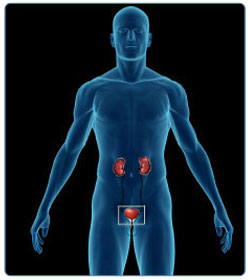How can the problem be treated?
The mode of treatment depends on the type of incontinence you have and the severity. In general, it would be beneficial if you follow the proper advice of your doctor regarding the use of pads to absorb the urinary leakage.
Behavioral Therapy:
Those of you who have a high fluid intake can restrict your fluid intake if possible. This will greatly reduce the number of times you have to visit the toilet.
Limit the amount of caffeinated drinks - Especially in the evenings or before going to bed. Example: Coffee, Tea or soft drinks. Instant
Behavioral Therapy:
Practice good toilet habits - Allow time to empty your urinary bladder so that it is completely emptied as possible. It is a good habit to empty your urine before going to bed every night.
Empty your bowels everyday - Prevent constipation by having adequate intake of fluids and fibre.
Pelvic Floor Exercises:
Learn pelvic floor exercises from your doctor and do it regularly. These
Pelvic muscle training exercises (called Kegel exercises) may prove to be beneficial in controlling the leakage of urine that occurs in people with stress incontinence.
Pelvic Floor Exercises:
Kegel exercises refer to the name of a pelvic floor exercise, named after Dr. Kegel who discovered the exercise. The muscles attached to the pelvic bone provide a good support for the pelvic organs like the urinary bladder and the uterus.
The principle behind Kegel exercises is to strengthen the muscles of the pelvic floor, thereby improving the urethral sphincter function. The success of Kegel exercises depends on proper technique and adherence to a regular exercise program.
The exercise can be done in any position, either standing or sitting. What makes the exercise ideal is that you don’t need any special preparation for it. You can even do it in office while you are working. Other people will not even know that you are doing so.
The exercise involves an effort to contract the pelvic floor muscles just like how you attempt to control urination. The contraction should be held for up to 15 minutes. This procedure can be performed whenever possible. Within 4 to 6 weeks, about 70% of women have had some improvement in their symptoms.
Pelvic Floor Exercises:
Various levels of Kegels exercise exist. The exercise involves simple tightening and relaxation of the pelvic muscles over and over, about 200 times a day. These are basic Kegels. There are many variations on Kegels: ranging from tightening slowly to increments going in and out. The exercise not only provides strength but also eases childbirth and prevents prolapse of the uterus or urinary bladder.
Electrical Stimulation:
Electrical stimulation using a low voltage
Hormonal Supplementation:
In some cases, especially in post-menopausal women, hormonal supplementation may be necessary (Estrogen).
Those medications, which can significantly interfere with urine production, may have to be modified or the dosage reduced.
Surgery:
Surgery for improving the continence can be done if all the above measures fail to reduce the severity of your symptoms. There are various types of










